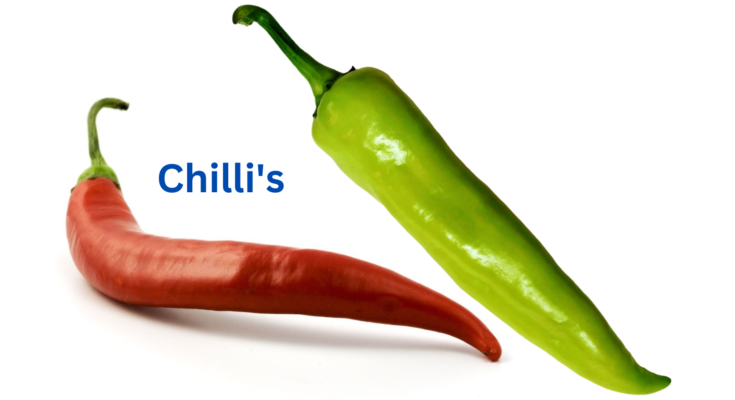Chillies (Capsicum annuum) are the dried, ripe fruits of the Capsicum genus, commonly referred to as red peppers or capsicums. They are an essential ingredient in cooking and constitute a significant portion of the spice trade.
The Capsicum plant is an annual subshrub with a single flower and typically pendant fruits. The fruits, which are initially bright dark green, turn a vibrant crimson red as they ripen. They are broad at the base, tapering to a conical tip, and vary in size, measuring between 2.5 and 15 cm in length. The pericarp, or fruit wall, is made up of parenchymatous cells containing red oil droplets and has thin cellulose walls. Smaller chillies are known for their intense heat and pungency, while larger varieties are generally milder.
Nutritional Composition:
Green chillies contain approximately 85.7% moisture, 2.9% protein, 0.6% fat, 6.8% fiber, and 3.0% carbohydrates. Their mineral and vitamin profile includes calcium (30 mg/100 g), phosphorus (80 mg/100 g), iron (4.4 mg/100 g), carotene (175 µg/100 g), thiamine (0.19 mg/100 g), riboflavin (0.39 mg/100 g), niacin (0.9 mg/100 g), and vitamin C (111 mg/100 g), with a calorific value of 29 kcal.
Dried chillies, on the other hand, have a different composition: 10% moisture, 15.9% protein, 6.2% fat, 30.2% fiber, and 31.6% carbohydrates. They are richer in minerals and vitamins, with calcium (160 mg/100 g), phosphorus (370 mg/100 g), iron (2.3 mg/100 g), carotene (345 µg/100 g), thiamine (0.93 mg/100 g), riboflavin (0.43 mg/100 g), niacin (9.5 mg/100 g), and vitamin C (50 mg/100 g). Their calorific value is 246 kcal.
Active Compounds:
Capsaicin, the primary active component in chillies, is a crystalline, colorless substance responsible for their pungency. Secreted by the outer fruit walls, capsaicin is primarily concentrated in the dissepiment, the internal structure dividing the fruit’s cavities. It has a melting point of 63°C. When chillies are burned, they release an irritating vapor that affects the nasal passages and throat. The fruits also contain a fixed oil, a red pigment (non-pungent), and yield about 20–25% alcoholic extract. The seeds, which are bland, contain small amounts of starch. Green chillies are particularly rich in rutin, a bioflavonoid.
Health Benefits:
Chillies are valued for their medicinal properties when consumed in moderation. They act as a natural decongestant, aiding in digestion and clearing respiratory passages. Capsaicin, the active compound, provides a range of benefits, including pain relief, antibacterial and antioxidant effects, and metabolic stimulation, which can help burn calories. Chillies also improve blood circulation by preventing clot formation and can aid in preventing bronchitis and emphysema. Furthermore, capsaicin’s properties make it beneficial for alleviating headaches and promoting hair growth.
Culinary Uses:
Large, mild capsicums are commonly used as vegetables, prepared similarly to brinjals or stuffed with fillings like minced meat. Smaller, pungent varieties are primarily used as condiments. Fresh green chillies enhance curries, pickles, and salads, often boosting flavor and appetite. Dried chillies are ground into powder for seasoning and used in condiments, pickles, and various dishes.
In summary, chillies are a versatile and indispensable ingredient in cooking and are equally valued for their nutritional and medicinal properties.




